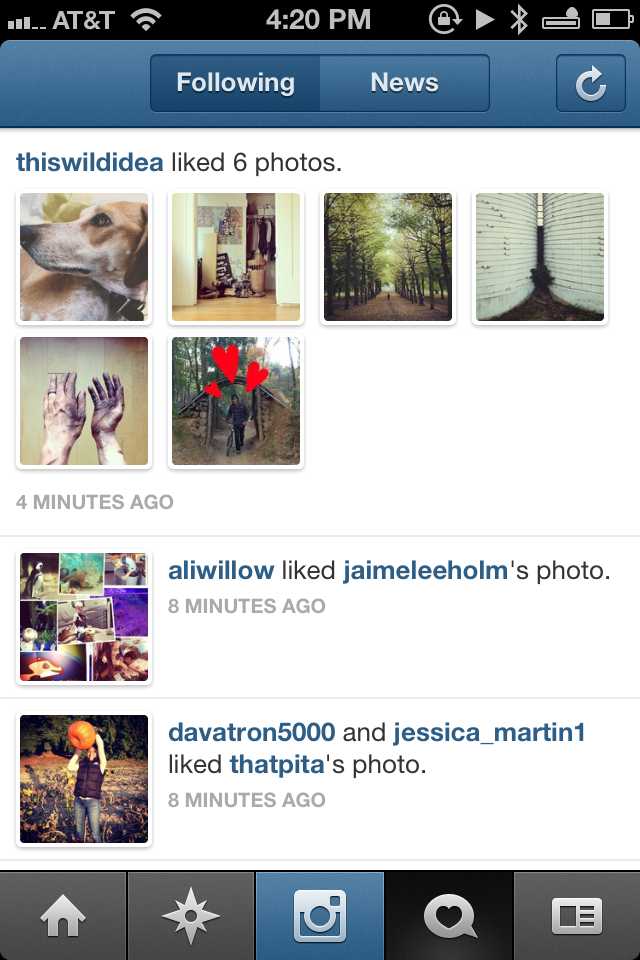
This site hasn’t been updated since 2012. You can still peruse who I was back then, but know that much of what I think, feel, write, and do has changed. I still occassionally take on interesting projects/clients, so feel free to reach out if that’s what brought you here. — Nishant
At a conscious level, we participate in social networks for all sorts of reasons: to connect with friends, to keep family abreast of personal news, to share our pictures, to play social games, to send and receive event invites, and so on. At a subconscious level, however, social networking is about one thing above all others: signaling.
Signaling is something we associate with animals. The quintessential example of signaling is that of the peacock that spreads its tail feathers to score a mate. The phenomenon serves as an evolutionary communication channel for the purposes of reproduction. Traditionally evolutionary biologists have believed that the peacock tail signal is a costly one: among other things, by maintaining a large, beautiful tail of feathers, the peacock proves to potential mates that he can survive in the wild in spite of this inconvenient appendage. There remains some controversy around the cost of this particular signal, but I digress.
The most interesting and arguably, powerful, type of signal is the dishonest signal. Take green frogs, for instance, that signal territorial defense by croaking in a certain way. As a study has found, green frogs often lower the acoustic frequency of their calls to exaggerate their own size. This bluff, of course, is designed to intimidate potential predators and competitors.
A successful dishonest signal involves a certain level of anonymity on the part of the sender. It's imperative for the green frog's true size to be concealed for his dishonest signal to work as intended. The ability of the green frog to mimic an authentic sounding lower frequency call is key as well. Finally, the dishonesty must leverage the state of the specific environment.
In the case of humans, it's worth clarifying the concept of a dishonest signal. It's tempting to associate dishonesty with lying, but that's generally far from the case. The dishonesty we're talking about here is in relation to the perceived image of the individual. A white lie can often be a classic example of a dishonest human signal. Your friend gets a haircut. You think it looks awful. But you compliment her because there are more social benefits associated with the delivering a compliment in that situation. Dishonest signaling is thus an extremely important part of being a social being and serves a very important purpose among human beings.
Since they serve as one of the primary signaling channels of our day, it's key for social networks to facilitate dishonest signaling between humans.
From this perspective, Facebook is at a severe disadvantage. Facebook requires that you craft an intricate online persona of yourself complete with demographic information, pictures, relationship status, political and religious affiliations, educational qualifications, and so on. Not only that, but Facebook broadcasts literally everything you do to everyone. And you are expected to snap to this image you've created. When you stray from it — that is, when you broadcast a perceived dishonest signal or one that is alien to your persona — the bluff is generally called in the form of dissenting comments and behaviors. In the long run, it means less, or worse, as we saw with MySpace, less meaningful engagement.
Twitter is better. You can remain relatively anonymous on Twitter, even completely anonymous (but it generally comes at the cost of certain popularity goals). The high fidelity of the signal, i.e. written language, often requires cleverness on the part of broadcasters but for the most part, Twitter is an effective networking channel in that it facilitates a healthy amount of dishonest signaling. Apart from the enforced character limit, it comes pretty close to signaling in real life.

Instagram is almost a perfect channel. You can remain as anonymous as you please and unless you've set your account to private, you can be followed by (and follow) anyone. The signals broadcasted on Instagram are images which, as the saying goes, speak a thousand words. In other words, the signals are left up to the interpretation of the receivers. And, the channel itself does very little broadcasting of what you do, which means that others' perceptions of you are mostly based on your own signals rather than ones created on your behalf.
Where is all this coming from? Over the past few months I've been trying to explain an emerging pattern in my social networking practices. Certain pictures receive hundreds of likes and lead to over a hundred comments on Instagram, but the very same pictures receive only a handful of likes and scolding comments on Facebook. Often a picture that seems to bring a tremendous amount of joy to my followers on Instagram can (and has) led to an argument on Facebook. The key seems to lie in the ability of each of these networks to facilitate dishonest signaling. While one (Instagram) promotes it, the other (Facebook) seems to encourage behavior that attempts to squash anything that could be a dishonest signal.
The problem: When a channel overly polices dishonest signaling, the channel itself becomes dishonest. I wonder if this is why more and more people seem to be talking about Facebook as a venue for being fake, and consider Facebooking to be not as much fun anymore.
Don't get me wrong, though. I'm still investing in Facebook.